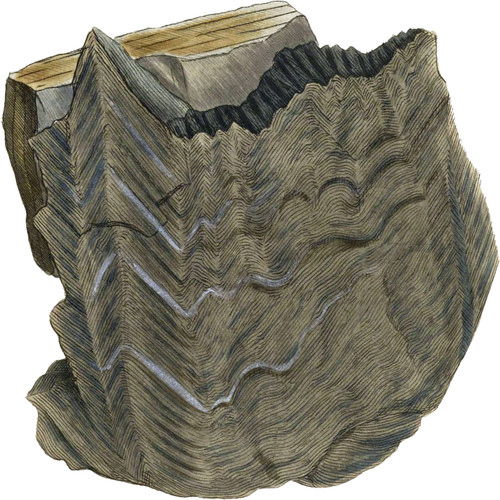 Enlarge
Enlarge
British Mineralogy
Acicular Hornblende, or Actinolite Schist
- Div. 2. Imitative.
I have called this a Schist or Slate, from the tendency it has to divide into laminæ, although it consists almost wholly of acicular Hornblende or Actinolite, with but a small portion of Feldspar. The whole stone from which this specimen is taken, is a large boulder of several hundred weight, found on Caslaw, one of the Grampian Hills. It attracted the attention of my very kind friend Charles Lyell, Esq. by its particular undulating structure, producing appearances on its surface, which, as he observes, resemble the angles of fortifications in the way Agates often do. But what is remarkable in this specimen, is, that the particular lam tote forming these lines are defined in the neatest manner possible, and are composed of reddish Feldspar, Quartz, and Mica (Granite); looking as if painted reddish for distinction. Again, there are laminæ of light coloured Quartz, with but little mixture, and also veins of pale green Epidote. The Actinolite which composes the principal part of the mass is in waved spiculæ running in Various positions but whose laminated structure coincides with the fissures in the Slate. Some parts of the mass are replete with dodecaëdral Garnets, so minute as not to be discerned without a lens.
The most durable Slate of Penzance in Cornwall, which, although very thin and light, has lasted more than a century in use where it is greatly exposed, has much of this Actinolite in its composition.
Had the Actinolite in this stone been in larger and broad crystals, (Hornblende,) and the Feldspar more abundant, it might have been called Green-stone. In its present form it differs, however, from any rock I have found described. It is to be regretted that, from its being a boulder, we are unable to ascertain its Geological relations.

